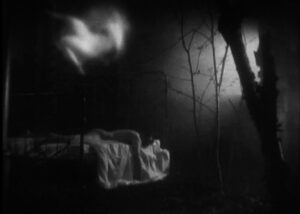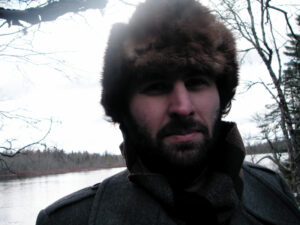
Furious Pleasures: an interview with Solomon Nagler (2008)
Solomon (is it impolite to call him Sol, like the solar sun he provides for all those who gather to bask in the glow?) is a Gothic materialist, attracted to moody, expressionistic interiors and dark fantasies. Steeped in avant histories of the moving image, Nagler made a decisive turn after a hand-processing workshop led him back to film’s material base. He would reinvent Winnipeg’s hyperbolic expressionisms and turn them toward a hyperbolic romanticism, filled with a hauntology of gesture, brooding and menacing landscapes, evocations of a mythic past, celebrations of the perverse and subversive. Everything suggests, implies, hints. It is a media work grounded in the body, hoping to leap across the discursive directly into the realm of sensation, to overwhelm the rational. How does it feel? These movies are home to Goth’s more familiar pleasures: death, decay, destructive passions and the specter of nature run too wild.
Mike: You have written about a “non-stick” cinema, movies that resist the lure of multiplex superhero adventures. Could you elaborate on why personal experimentalisms are necessary, and how they conjure necessary escape routes in the face of irresistible, large budget spectacles?
Solomon Nagler: By engaging in various desperate acts of self-annihilation, early cinema resisted demonstrations of Actualities – the recording of everyday events onto film – and protested its domestication as a technology of distraction for bourgeois urbanites looking for new ways to combat the unbearable drift of everyday life. Wrapping its nitrate limbs around the flickering lantern of the projector, Cinema condemned itself and its audience to a demonic inferno. Yet the handlers of Cinema were determined to tame the primitive mechanisms of projection, designing fireproof projection booths and manufacturing less temperamental film stock. A safe architecture of projection was developed, permitting audience members to glue their eyes to the screen, and to develop the filthy habit of coating themselves with the gooey illusion of cinema.
How can we develop a nonstick Cinema, one that will provide a spectacle sans adhesive? A truly nonstick cinema depends on films that break through the cocoon of voyeurism by expanding ideas of representation, reception and catharsis. The dominance of seductive narratives must be superseded by synaesthetic, abstract textures and aberrant camera gestures. Bodies actively engaged in perception, transformed by the Cinema’s projected light sculptures, must replace those that are inactive and stuck.
Filmmakers who explore experimental, abstract approaches attempt to move beyond the dichotomy of being either transfixed by the mirror screen or perversely aware of the mechanisms of projection. They use the theatre to sculpt light, moving beyond the indexical, representational constraints imposed by the machinations of the camera. Projected in the theatre, these images are a form of transference, textural interpretations of emotional and spiritual reactions to natural phenomena, rather than representations of them. Instead of gluing spectators’ eyeballs to the screen, experimental cinema encourages an embodied sense of perception.
Yet a truly glueless cinema cannot remain within the walls of the theatre: it longs to leave the theatre entirely. An authentically nonstick cinema necessitates the complete disposal of the theatre. It must, in fact, be cinema-less. Projected in a dark field, stared at by the stars, glueless images enable nocturnal spectators to participate in a Cinema of the Senses, in order to better experience the dark mysteries that surround them.
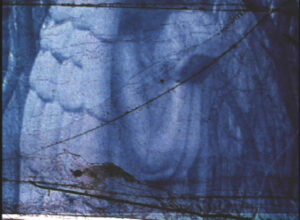
Mike: You have dedicated so much of your life to the movies. Teaching them at the art school in Halifax, programming and making, collaborating with others. When you look back, is your childhood already a film? And what significant scenes would you care to bring forward that might illuminate your future hopes of becoming a filmmaker? Is there any way to remember without turning our past into the movies?
Sol: An exploratory approach to filmmaking necessitates a form of dissociative amnesia, a traumatic fugue where we chase after a limited set of elusive images that repeatedly appear throughout our body of work. There can be no exploratory approaches to creating film without forgetfulness. Memories will be replaced by these spectral fragments that gut our bodies from within to create an infinite void, one that ensures exploratory processes are continuous, unending. There is no division between my memories and my films. In fact, my sense of self can be derived more comprehensively from my body of work. If I were to isolate or identify one repetitive aspect of my films, it would be an elliptical journey towards and away from hope.
I grew up in a prairie town that eats your memories and swallows your thoughts. The particulars of childhood have dissolved into the landscape, mixed up within the dynamic play between the frozen dormancy of winter’s white desert and summer’s dry ocean of yellow wheat stalks.
I can only retrieve memories of forms, images of light, in particular a perfect rectangle that would peak through my door every morning. Pretending to sleep, I would stare at this band of light for what seemed like a lifetime, listening to the voices that emanated from its source, anticipating and anxious about the day it would eventually introduce.
Another formless texture I could retrieve for you would be the sensation of the dry waves of forced hot air that emanated from the numbingly cold metal grates of our modest suburban bungalow’s kitchen. Winnipeg winters decide to make our thoughts palatable in the form of static shocks and crackling dry skin. It fills up the void left by grains of white dust that trick you into sleeping all day.
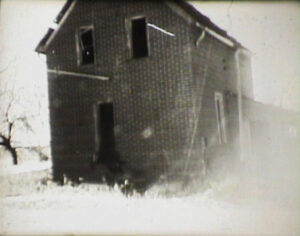
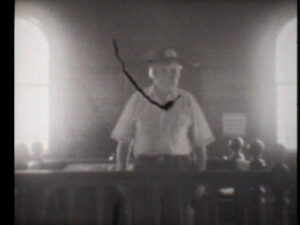
Mike: It has been a commonplace over the years to be regaled by movie programs that emerge from a shared geography: films from Winnipeg, for instance. Do you feel there is a house style in the Peg, or even at the shared equipment lounge of the Winnipeg Film Group? How has your work given in to this gravitational pull, the endless seduction of a view?
Sol: There has been much speculation as to why such a unique filmmaking community has emerged from the Winnipeg Film Group, an infamous filmmaking cooperative founded over 30 years ago in the world’s coldest city. This idea of a regional style in Canadian Cinema is a consequence of our county’s geographical predicament; a sparse population panicking behind the crumbling walls of failed fortress cities. Speaking of a Winnipeg style evokes the appearance of an itchy phantom limb that emerged when I cut loose from that island city many years ago. How can I describe the contours of my own right hand? It is something that is evident, yet only emerges when it is put to work. There is an incredibly sophisticated and ever evolving film culture in Winnipeg, one that I have written about and continue to keep my eye on during my east coast exile. It extends far beyond art-deco fantasies and postmodern narratives, these are often misused tropes used by festival programmers who are lazy and uneducated.
One trait that is shared by most WFG members is a fiercely independent and ambitious spirit, a militant sense of provinciality that strives for honest and original content, all the while being haunted by the spectres of Winnipeg’s rich filmmaking history.
My nomadic tendencies have placed me in cities like Montreal, Vancouver, Warsaw and now Halifax. I have made work in all these cities, and to an extent, you can see the face of these places in my films. Although I do not make diary films, every film I make is about the time and place in which it was made; my influences at the time, my collaborators, my ailments, the psycho-geographical energies of the city I wandered in. This all affects my process, which is a frosted window I try to keep open while my feet are burning comfortably in a tub of scalding water.
Berlin
Lost in the broken bottles, piss and shit of East Berlin, walking past a ruined Jewish Cemetery, I was a square-faced floating flâneur sketched by Chagall, everything framed a faded, midnight blue. I walked into a remnant from the Shoah; a synagogue untouched by Kristallnacht due to an auspicious placement in a courtyard hidden away from the street. Wandering in on Shabbat, I hid behind a group of wailing Russians who swayed back and forth and mumbled mystical incantations for an approaching Sabbath bride. Concentrating on their chants, I was soon surrounded by the blinding flames of permanence that emanated from the bimah draped in white cloths and silver crowned torahs. I was told to move to Warsaw, where I finally committed to and developed my filmmaking practice.
Montreal
I wanted to dream in the wet rotting leaves of Montreal’s everlasting fall. My home town had an Autumn that lasted two weeks. In la belle ville, the city swims in the sweat that drips off its red leaves. I spent two months wandering the streets at night, furious at all the nocturnal beauty of a particularly rain-soaked fall. Walking past a swirled staircase on the Plateau-Mont-Royal, my drift froze as a light switched on in the window of a first floor, red brick flat. Inside was a perfectly abstracted nude, carved by the shadows of a yellow lamp shade, one breast exposed, a flesh-toned curve that melted into the dark. It was a perfect abstraction, a definitive Montreal moment; the high contrast fury of the prairies finally replaced with the erotic tones of tea-stained light.
Halifax
I ate nothing but fog during the first two months of my east coast exile. The port is completely abandoned during the off season. I followed diffused light beams to a series of abandoned sea salt drenched docks. Fog horns blasted in the distance, drunk students wandered in and out of beds of floating vapour. Across the harbour are refineries and coal plants, my favourite view of this humble, suffering port city. Sitting on a bench beside the lapping twilight tide, I spent an hour staring at the burning flame that danced on a rusted tower across the harbour. It created a perfect emptiness, gutting my insides, killing stray thoughts, promising new ones for my walk back home. These confessions make me realize that my eyes primarily think at night…
Mike: Your acute seeing encounters remind me how much of my life is dedicated to my computer master who requires constant homage and attention. In this moment of rapidly expanding terminals, where everyone has become a hobbyist filmmaker, portrait photographer and publishing house, isn’t there something politically backwards about the act of making pictures? Don’t we have enough pictures? Shouldn’t we be encouraging people to get away from this screen universe and go talk to somebody for a change?
Sol: Cinema is the craft of happenstance, the art of the find. Films are not made, they are a collection of image remnants shattered by chance and circumstance. Filming and gleaning are interchangeable terms; everything is given to the camera, montage is merely the act of assembling situational scraps. To ask if we have enough pictures is to suggest that we have enough mirrors. The submissive gesture of sitting in the Cinema chains our gaze, erases all distractions and tames our drift. Our interactions with the numbing ambient light of flat screens nurtures savage instincts, administering a series of violations and a more traumatic distancing than the Cinema could ever achieve.
But there is no turning back, screen culture may be limiting, but it is simply the newest incarnation of an ever evolving mirror/skin. Through it we develop syntax and language, it becomes a means of gaining power and sex , used to seduce and kill. Cinema has the unfortunate distinction of being associated with the panicked malaise of modernity; a pandemic of boredom, creating a blanket of moving pictures to block out the disappointments and inconsistencies of everyday life, something to mask the smells and textures of bumpy bodies.
Why go out and talk to someone when the most important words are those which are passed over in silence? The only way to shatter the spectacle of the Cinema is to make it eat itself. Silence, space, emptiness… these are all ways to bring people back to the world outside the black box. These are techniques that can expose the dirty guts of image-making machines. I think that an ideal Cinema is one that forces us to stare at a face for 20 minutes, a Cinema that brings back the holiness of flabby arms and stinky breath. It is not a matter of convincing people to go out and talk to someone, it is more important to convince them to go out and stare at people for prolonged periods of time. By shattering the mirror/screen, we can rip apart our mirror/skin, image makers can use the abstracted dream space of the black box to give spectators the euphoric tastes of an undisturbed moment of time. This may be the only means of bringing people back to real, naked, unmasked bodies.
Mike: To go through the necessary detour of a picture in order to arrive at flesh and blood – it seems the movies have a tragic function after all, both the poison and cure of alienation. Sitting inert and unmoving, without speech or smell, seems a curious way to re-imagine the body. But perhaps no price is too large to pay if you’ve lost the only body you have.
I’m wondering if you can part the mysterious curtains of the Winnipeg Film Group for a moment, it is an organization with a hefty mythology and luminary players. Your work seems distinctly at odds with much of what has been trademarked and exported as made in Winnipeg work, with your experimentalist, hand-made approach. Can you talk about your reception or position within the Group, perhaps enlighten us with some storied moment from the past, dish a juicy rumour or two, give us a sense of the characters who are setting the stage? Though even as I ask this, I realize that your answers which long to be questions, have been so rigorously abstract that I am likely to learn very little. I’m wondering if you could fight against your own tendencies, and write something as if you were speaking it out loud, to give me a sense of your speaking voice, in place of these very carefully parsed recitals which seem afraid of giving something away. There is some sense of a secret that must not be shared, the secret of you perhaps, I don’t know, but at every turn there seems another wall erected, with Do Not Enter signs, and roads leading far away from the centre. I don’t think I’m trying to pin you down or force you into a position. But perhaps you can write something that only you can write, from your own life, something of what has actually happened to you as a person, not as someone who is carrying around ideas. I realize that great currency is placed – particularly in the art world – around ideas. But for me they are not nearly as important as actual experiences, and the way these events have shaped seeing. It seems to me that we are carrying asymmetries – physical, emotional, cultural – and that through them some kind of work practice evolves. I am trying to get some sense of your asymmetries, but am met at every turn by atmospheric detours. Help me Sol. What should I do? Can it be different?
Sol: I hope that we can think of it more as a labyrinth then a wall. I can’t help but feel panicked and useless during face to face interviews. The written word offers permanence and the luxury of revisions that erase foolishness. Nonetheless, as you know from our time together in Sackville, I am partial to chaotic, amicable rants fuelled by booze. Perhaps these asymmetries are a consequence of sculpting stray thoughts in a carefully worded email. Authentic communicating only occurs when you can smell the face of another, any screen-type-text-play is essentially a monologue with a keypad.
I have been hiding from you a series of fortunate circumstances that have inspired much of the content of this dialogue; the majority of these emails have been written while in transit between cities. I read your questions about Winnipeg, Montreal and other cities while on a plane or just back from the airport, travelling back and forth from Winnipeg to Halifax to Montreal and back (and then back to Montreal for a DVD publication release this coming weekend). This has resulted in a full-on immersion into these former homes, drowned by nostalgia, Tarkovsky’s nectar of the Cinema.
During the WNDX (fringe media) festival in Winnipeg, we often invite out of town filmmakers for a walk through the prairies – into the forest, by a winding river – swimming in the great plains’ towers of grass. While walking with Barbara Sternberg, Alexandre Larose and Philip Leonard, I sliced open my thumb while absentmindedly grabbing some aggressive sawgrass. I quickly pulled out a sharp stem that was lodged down to the bone. For the past month, I have been squeezing out pieces of yellow twig that often emerge while typing out this conversation. I think this is another fortuitous coincidence, not only have I permanently embedded fragments of the prairie in my body, but I have a physiological match for this intimate purging of ideas and memories.
So now that I have fragments of the prairie pulsing through my bloodstream, can I perhaps unlock the secrets of the WFG, and my place in this mysterious filmmaking co-operative? In one sense, it is a film community like any other/like no other. My involvement with the WFG was initiated by a hopeless adoration I had with an untouchable cinephile who came from the sticks outside of Winnipeg. She liked to talk in a Hal Hartley-inspired dialect: deadpan, bored and mocking. She worked in the local rep cinema and video rental store where all of her hipster workmates exchanged one-liners from early Hartley films like Amateur, Simple Men and Trust. I followed her to a mid-winter basic filmmaking workshop being at the WFG. Our classes were being held in a studio that was being sculpted into a macabre Jeff Erbach gem called Under Chad Valley (1998). Our first exercise was to construct our own film project within a rusted, subterranean butcher-shop that had undefinable skinned animal carcasses hanging among stacks of jars containing squishy body parts preserved in formaldehyde. I was completely blown away by his secret cinema, furious with strange sex. His work would cast a shadow on my practice for years to come. This is something that you and I share, an admiration for this misunderstood prairie boy from Transcona.
The girl eventually quit filmmaking and hooked up with Canada’s most famous young visual artist. They live in New York now, I think…
After a month long course on lighting and how to use a Bolex (camera) I went into a filmmaking frenzy. I immersed myself in Cinema by renting 10 VHS tapes a week at the Winnipeg Centennial Library and quickly became well versed in work produced through the WFG. I went on to create three films over a two year period, shooting them while wandering in and out of Winnipeg; during my brief stay in Vancouver and extended exile in Warsaw.
Much of my time in Poland was spent chasing after a face that never had the chance. One side of my family doesn’t exist, two out of hundreds survived. Meeting at a refugee camp, they quickly consigned the memories of past children and past families to silence and moved to the cold city of Winnipeg. Older, with shards of hopefulness, they had a fresh Canadian child and then died without conversation. I was sent to Poland by my Zaida who had some unfinished business; to swim in the spaces left behind by faces forcibly forgotten, to have fits in foreign flesh, drink with Chasids and mumble Yiddish incantations. I spent two years lost in a wondrous drift, waking up for a period of time in a train station east of Warsaw, then floating once again, with a face all blue and crooked. All of this is summed up in my first film elegy perhaps/We (11 minutes 2003).
Elegiac Cinema is misunderstood. Sorrow and mourning cannot generate enough light to burn images onto film. It is the mania of overcoming this sorrow, a sweetened pain that motivates elegiac film work. It was Rabbi Nachman of Breslav whose followers silently screamed “Kol Haolam Kulo gesher tsar me’od Vehaikar lo lefakhed klal” (all the world is a very narrow bridge, the main thing is to have no fear) while being decimated by successive pogroms. This the root of certain types of fringe film; a fractured joy, one that simultaneously assembles and deconstructs.
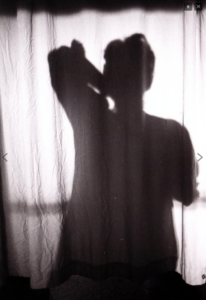
Five films later, I returned to Canada from Poland, arriving in Winnipeg just in time to see Phil Hoffman present his devastating, metaphysical masterpiece What These Ashes Wanted (2001). I begged him to give me a much sought after spot at his Film Farm workshop. Either through instinct or curiosity, he let me jump the cue. After learning more about handmade cinema there, I immediately wanted to pass on these home-made, no-budget cinema techniques to the army of talent at the WFG. Together with photographer John Kapitany, we concocted a mini-film farm. Out of this group sprung a plethora of Winnipeg DYI film superstars: Mike Marynuik, Cecilia Araneda, Carol O’Brien, Jenny Bish and Robert Pasternak. Films made during this workshop went on to play at some of the most prestigious international experimental film festivals.
I’m uncertain how this hand-processing revolution fit into the pantheon of WFG films that audiences are more familiar with. Matthew Rankin from L’Atelier national du Manitoba tried to make sense of it in an article he wrote called “The Winnipeg Image.”
“Maddin’s love for the divine fuck-up has resonated deeply with Winnipeg filmmakers. In recent years, filmmakers John Kapitany and Solomon Nagler have led a veritable revolution in Winnipeg-style image degradation by introducing the WFG to the cheap and potentially disastrous methods of processing 16mm film by hand. This new-found zeal for images devastated by chemical atrocity could only be rooted in the influence of a filmmaker like Maddin.”
I am not certain that I agree with his assumption that the emergence and popularity of DYI techniques can be attributed to an influence from Maddin. If anything, artists who explored handcrafted film work reacted against the traditional WFG aesthetic of highly stylized, ironic, genre films. This new wave of experimental cinema embraced an ethics of fragility, the mysticism of mismatched alchemical formulae, and the quiet whispers of diary confessions. It was an attempt to imprint aberrant gestures, or sculpt a faded memory on celluloid. It was an intensely personal, secret cinema whose only inheritance from the WFG was perhaps the insistence that exploring formalist experimental film techniques did not mean that we have to give up on narrative.
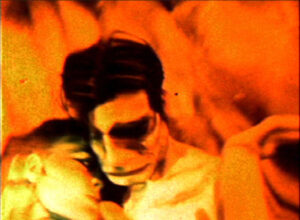
Mike: The Sex of Self-Hatred (9 minutes 2004) offers us the wordless marriage of a green-skinned woman caught in heraldic, tree bondage, and a suicidal man alone in a ruined room. Tinted Hebrew lettering interrupts the ethereal interrogation pans, before a bent mirror suite of stills bring the unhappy couple together in the same frame, looking like Gustav Klimt outtakes. Something has gone terribly wrong here, but what? And why the period trappings?
Sol: This is a vicious film, a synthesis of suffering, sex and spirit. In my youth, I was obsessed with fin-de-siècle Vienna: Wittgenstein, Karl Kraus, The Vienna Secession, Freud… I came across the writings of Otto Weininger, an anguished, self-hating genius who wrote several aphorisms and a magnum opus entitled Sex and Character (1903). Soon after it was published he shot himself in the head in the same house where Beethoven had died, propelling his work into public attention. He was 23. His work is saturated with anti-semitism, homophobia and misogyny, even though he was Jewish and gay. Aside from being astounded that anyone could compose such a poetic treatise on self-hatred, I was lured by the mysticism and spiritual longing in his texts. I wanted to film him while he took his own life, creating a mise-en-scène that amplified the paranoia and brutality of the crumbling Austro-Hungarian empire, the society of sickness that Weininger internalized. I wanted to guild the film in borrowed ornamentation from Klimt and Schiele; arousing and grotesque, unapproachable and cabalistic. This film tracks his transmigration through a distorted labyrinth weaved by the threads of his metaphysics of suffering; the secretive, feminine Jewish Male, the pure Aryan of the natural world, bound upside-down in the Etz Chayim (tree of life), gender trouble, burning Hebrew text tatooing bodies…then it happens; quiet, emptiness and a lifeless body drowned by light.
Mike: The Last Jew of Edenbridge (4 minutes 2003) offers hand-processed pans of a synagogue, and housing enclosure, while an old man steps into the frame pointing the way. Surely, he must be the last Jew, his status underlined by a visit to the Hebrew Cemetery to visit with dead friends. We look, but we cannot listen to him, there are no words here, so we gather what we can from his sunglassed face, the cool reflections of his surrounding meeting him everywhere he looks. As if he was part of every glowing window, the hope in every frame. Who is this guy, what is Edenbridge and why did you make this movie?
Sol: This film is a documentation of a pilgrimage that I made to Northern Saskatchewan. Driving through the perfect lines of the great plains, this was the second in a series of landscape portraits, a reflection on thin-skinned prairie permeation, an osmosis of sky and horizon into bodies. I followed the utopian, back-to-the-land, socialist dreams of a Litvak street merchant who was fed up with the gritty suffocation of Whitechapel, England. He picked up some books about farming in Canada, and convinced his brothers and friends to make a leap of faith into the Canadian wilderness. Suffering for years, they eventually made a go of it, building a community centre and a modest wooden synagogue that was transposed from an impoverished, Russian settlement Shtetl to an isolated field of flowing wheat stalks, swimming in an ocean of blue sky.
Over time, everyone left except for one man who guarded the remnants of the Edenbridge Jewish farming colony; the wooden synagogue that was built by my great-grandfather and a remote cemetery surrounded by nothingness. This film was a continuation of my exploration of filming spirit stains, blinding the camera with sun-drenched windows, burning alchemic formulas drawn by faded photographs. The last jew of Edenbridge died two year ago, the lonely synagogue now stands with its door unlocked, hopeful that someone whose blood has roots in the flat soil will drive down a remote dirt road, have a seat inside and contribute their thoughts to its perfect quietness.
Mike: Notes on Gesture (7 minutes 2007) is a black and white dance portrait, the figure step printed and time lapsed to accentuate the way each movement arrives from the body’s core. She dances through the film’s hand processing scars, and because her figure is also a white tone, like these marks, she appears as a kind of effect or offspring of the emulsion. How would you defend yourself against the charge of objectification, of creating a beautiful surface fetish that turns its female subjects into a thing amongst other things?
Sol: Before moving to Halifax, I was asked to give a master class in cine-dance at the Danza Teorica conference in Mexico City. My wanderings in this muddy genre were completely accidental. Throughout my work, I have experimented with gesture integrated into an expanded mise-en-scène, where the emotional arc of a narrative progresses through movement rather than character-driven conflict. Bodies are threaded through contrasting techniques woven throughout the film. This includes migrating between extreme stasis to unpredictable twitches, from indexical clarity to fogged, light-soaked textures, and to mapping tightly framed bodies to silhouettes drowned by natural landscapes in ruthlessly framed wide shots. Through a jet lagged, high-altitude, mescal infused 4 hour talk, I ranted against the unethical structure of most work made in this genre; brutal documentations of what was once a story told by a body flirting with awkward and fleeting immediacy. Cinema was created as a means of enslaving movement. By expanding choreography into the mechanism of motion pictures, we can perhaps create a perfect mirror for holy gesticulations. Citing Maya Deren’s idea of cameras dancing with bodies, I argued that this can be extended to include textural explorations that simultaneously blanket the body on screen and spectators in the cinema. I showed works that played with the eroticism of absence and presence, integrating film material that works against specifications of celluloid, work that hides and hints, leaving impressions rather then offering descriptions.
This was the motivation behind Notes on Gesture. The title was taken from a beautiful mediation on cinema and gesture by Giorgio Agamben. It was made as a reaction to the rather hostile response I received from the dancer participants in Mexico who said that the films I showed destroyed the choreographed event and devoured the dancers. This film is an apology of sorts, a filming of partner-less dancers, swaying with an invisible idea, bodies fogged into arguments for a cinematic syllogism. Reducing a body into an abstract texture is an ethical statement, it implies a rejection of the tyranny of clarity, the importance of the secret and the eroticism of emptiness.
Mike: Black Salt Water Elegy (16 minutes 2010) is a sumptuous black and white dream of a movie, filled with lonely mists and slow motion water treks. After the destruction of Halifax’s Africville, a mostly black enclave on the city’s south side, the rest of the movie appears as a ghostly reaction shot. A wonderously lensed interlude with a lonely cleaner follows. The camera waits with him as he washes his hands, then drifts back into the soft focus surrounding. It pans over the muscles of his back, waiting, as if he had time to wait, as if we had time. The restrained emotive soundtrack favours touched up natural sounds and quietly emotive drones, lending a charged suspense to even the simplest actions here. When he meets up with his beloved they dissolve into a flicker of abstracted bodily hopes. The next day he waits by the window in the grey light, and he might be anywhere, but he’s not. He’s come home. Can you tell me more explicitly what is the storyline here? The landscape is also a character – what part does it play? How did you go about constructing the movie – was there a shot list in place first?
Sol: With Black Salt Water Elegy, I closed my eyes and fell backwards into old habits, tapping into my Winnipeg instincts of small town isolation. The restless dreariness of the east coast continues to baffle me. I made this film in order to come to terms with my new home. It was a continuation of exploring the mysticism of displacement, to inscribe a fit of history in flux. I wanted to continue to tell hidden stories that have been ripped to shreds, a fury fed by the savagery of narrative form.
My films are made with no money, or bits and pieces gleaned from filmmaking co-ops and arts councils. Once funding has been confirmed, I immediately burn the application, a process that I refer to as “forgetting the script.” After a prolonged period of reflection and finding crew members who will work overnight for next to nothing, I write down a series of ideas and impressions that have been left lingering in the ether. I want to discover how the emerging circumstances of shooting the project will inform the images and the floating emotional resonance of what is left of the film’s plot, weaving connections between seemingly incongruent stray thoughts. As the technical specifications of the shoot are solidified, I make sure to schedule enough time to allow chance operations and collaboration to inform the film’s emerging structure. I aspire to create organic, original and sometimes baffling experimental narratives.
For Black Salt Water Elegy, a 20 page film proposal was reduced to 7 sentences describing simple actions and space. I refuse to work with shot lists and no one is allowed to see the initial script. It is all about strategic improvisation, creating frames that can be breached with ease. This film is about tasting bodies by expanding the elements of mise-en-scène. This includes manipulating image textures to map out the emotional arc of the film, integrating gestures that progress to and from stasis and aberrance, migrating between indexical representation and flickered abstraction, and an in-camera play with space and perspective using models and maquettes. Black Salt Water Elegy is an attempt to illustrate how the body is the dwelling of history; that viscous touches and furious pleasures can create the necessary breaches needed to gather up what we have lost through the injustices of everyday life.
Mike: Please forgive my amateur, armchair psychologizing, but it seems that the parents who have left you behind have been met with an outpouring of movies. Each of your films seems to reach towards these dead ancestors, speaking without words, run through your own fingers, as you try to learn the always changing language of the ghosts. If they would alight for a last time and settle into your living room cinema, ready to receive your pictures, how would you introduce your work to them? What words would you offer by way of preparation?
Sol: I would gouge my eyes out and then start begging for forgiveness. Everything after that point would be screamed, so my introduction would probably consist of nothing more but a series of long, sustained, deafening tones.

